Local demand control- the best route to energy saving
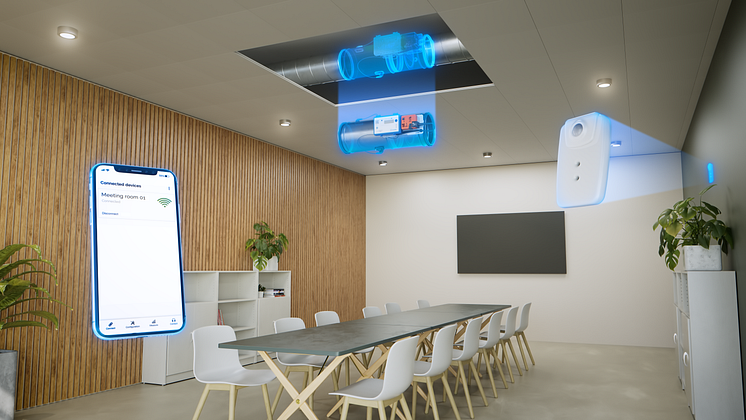
Energy savings should support a good indoor climate
Since the recent spike in energy costs, energy consumption in buildings has been high on the agenda for everyone. Given that buildings account for 40% of total energy consumption in the EU the provision of energy efficient ventilation whilst maintaining a high-quality indoor air climate is more important than ever before.
Some countries have chosen to enforce change and in October the decision was taken in Denmark, for instance, to recommend that the winter temperature in public buildings should be reduced to 19°C in order to reduce energy demand for heating.
We know that the HVAC system accounts for a significant part of the energy consumption in commercial buildings, so of course it’s a good idea to look at energy reduction measures. However, is simply turning down the thermostat the solution to the problem? Or does it create further unexpected issues?
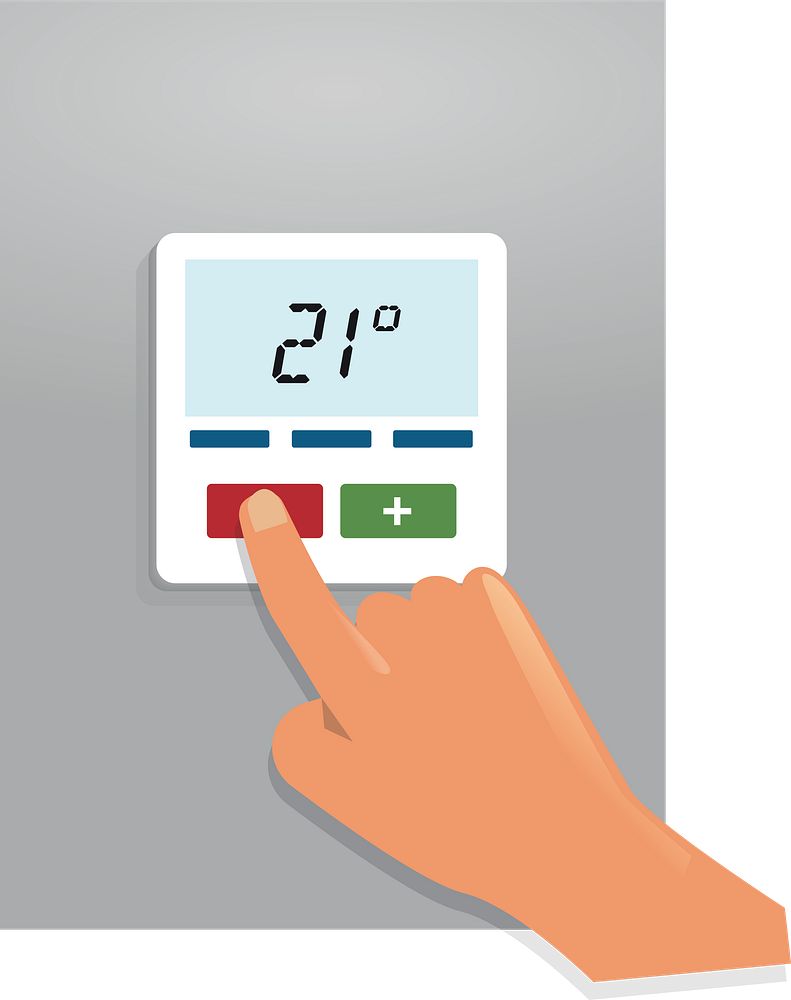
We need to take a holistic approach and look at this from the user’s perspective.
Taking schools as an example, if we lower the thermal indoor climate then those schools already suffering from a poor indoor climate will see further degradation resulting in a major overall loss in children’s learning capacity. Poor air quality and discomfort are a dangerous combination and together can reduce learning by a large percentage. A comprehensive UK based study of over 3700 pupils shows that, along with lighting, temperature and air quality have the biggest impact on pupil attention and retention with poor indoor climate reducing learning by up to 16%*.

Outside of the classroom several empirical studies show that there is a direct correlation between room temperature and productivity. For example, a respected study shows that productivity decreases when the temperature is below 21°C and above 23°C, (as shown in Figure 1). According to the study, productivity is reduced by approximately 2% when the temperature is lowered from 22°C to 19°C.
Other studies show that the reduction can be as much as 5-8% when the temperature is reduced to 19°C, (as shown in Figure 2, which summarises several studies).
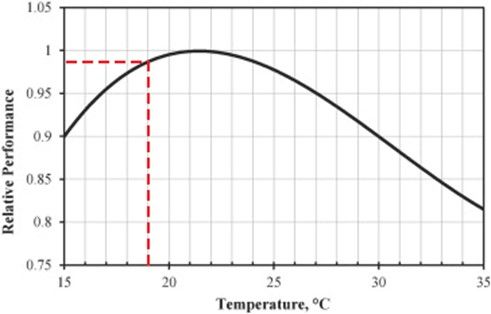
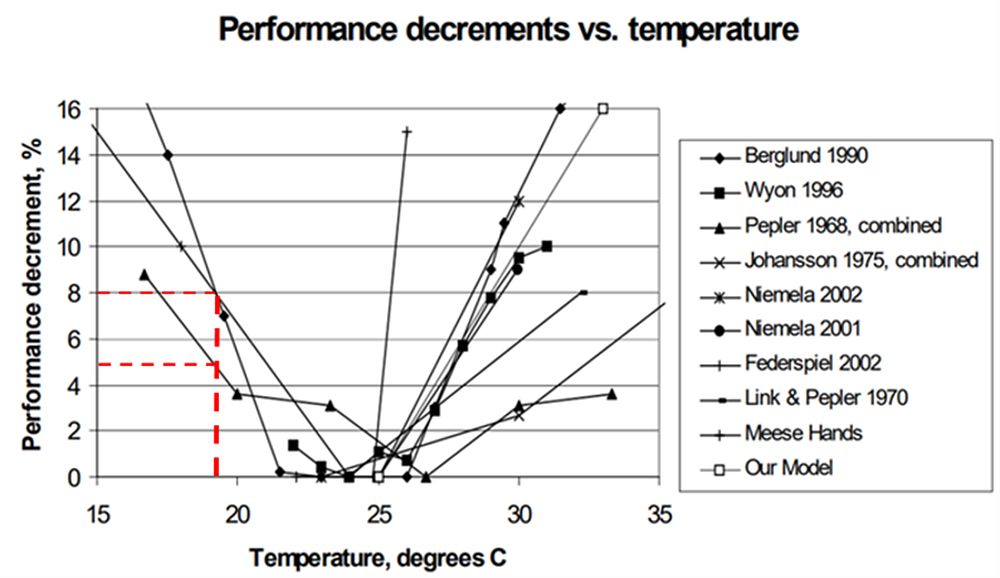
OK so if reducing temperature is not ideal what about reducing airflow in the HEVAC system as a method to reduce energy consumption? Given the recent example of COVID it is clearly not a good idea to reduce the fresh air exchange rate in a building. It has also been well documented that poor indoor air quality results in a negative impact on productivity and people’s cognitive skills. Additionally, as airflow rates drop the air becomes more humid, which could lead to dampness and mould problems. Reducing the temperature as well as the flow can exasperate this and in Denmark several articles have been written suggesting this is in fact what is occurring***.
Risk of increased energy consumption and operating costs
In general, the desire for a lower heating demand – and a reduction in the room temperature heating setpoint – could lead to an inappropriate increase in energy consumption for ventilation and air conditioning. To avoid this happening, it is necessary to consider the interaction between the different HVAC installations and their use.
One scenario could be that the general room temperature setpoint in the building is reduced to 19°C. If the building has large internal heat sources and/or solar heat gains, this could create a natural surplus of heat at times, which would result in the activation of other parts of the HVAC systems. For ventilation, this will mean additional ventilation requirements. For air conditioning, it may mean activation of cooling even in the winter months.
So how do we reduce energy demand whilst maintaining a good indoor air climate?
Most existing HEVAC systems run on an “entire building” approach providing conditioned air to all parts of the building at the rates laid down in the original building design. These rates take no consideration of factors such as occupancy, heat loads or local air quality. On the other hand, adopting a localised demand-controlled approach to ventilation allows rooms to effectively be switched off when not in use or supply conditioned air at rates dependant on occupancy levels, air quality, temperature, or a combination of all three. Devices such as Lindab’s Ultra BT™ VAV controller use ultrasound to accurately measure and control airflow right down to minimal flow rates. Combined with local wireless sensors and set via Bluetooth and a phone app, these intelligent devices provide a simple retrofit solution to provide localised demand control and significant reductions in building energy costs without sacrificing on indoor air quality or reducing the thermal setpoint.
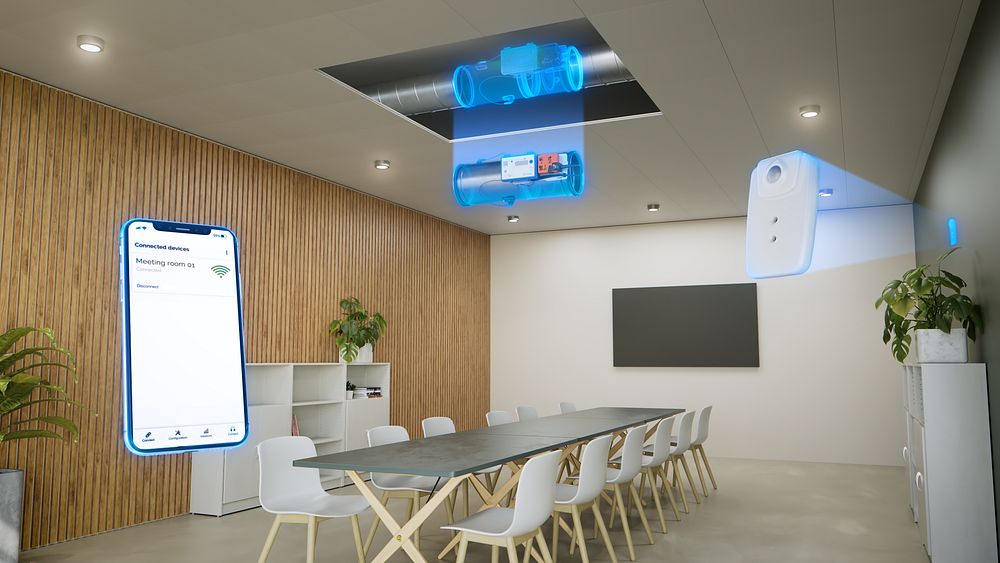
This localised control approach makes modern ultrasonic VAV devices such as Ultra BT™ ideal for retrofit into older buildings that perhaps do not have existing BMS systems. Utilising WiFi and Bluetooth to communicate, these products minimise installation disruption and provide a level of local ventilation control, energy saving and adaptability unavailable from previous technologies. Being wireless also means that rooms can be upgraded ad hoc as demand dictates, so no large capital outlay in one hit.
Local ultrasonic measurement provides a precise airflow measurement methodology, which takes into account local turbulence negating the need for long straight duct runs to establish a laminar flow before the device. Instead, the system corrects for the turbulence, enabling them to be fitted into tighter spaces allowing opportunities for local control where this was previously impractical.
So rather than turning down the thermostat or reducing overall building airflow lets take a closer look at where the demand is and satisfy that demand only when called for and not on a 24/7 basis.
Common sense really, and now thanks to innovative devices such as Ultra BT™ a cost effective off the shelf simple retrofit solution is readily available to achieve this.
Andy Watton,
Lindab National Sales Manager
* Source 1: “Clever Classrooms”, Peter Barrett et al, 2015
** Source 2: Seppänen O, Fisk WJ, Lei QH. Room temperature and productivity in office work. Lawrence Berkeley Natl. Lab., vol. 1, Lisbon, Portugal; 2006
*** Source 3: e.g., HVAC-magazine nr. 1 - 2023
